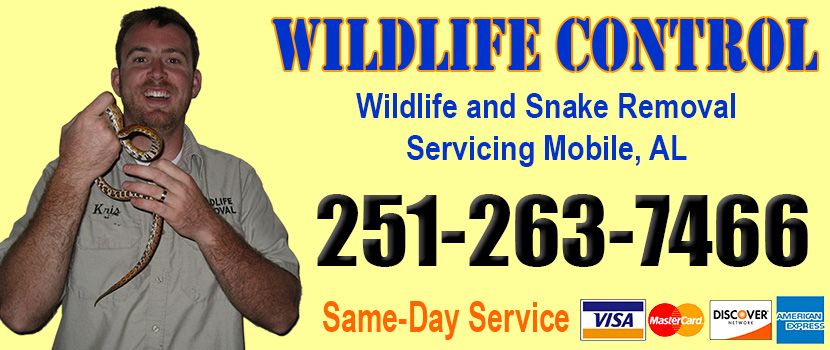
Welcome to mobilesnakes.com! I am David, a snake enthusiast living in Mobile, AL. Many people don't know that Mobile is in fact full of snakes! You just need to know where to find them - they can often be shy and elusive. Some Alabama snake species are more common outside of the city limits, in different parts of Mobile County AL, but many types of snakes are indeed common in the more urban parts of Mobile. This guide is meant to help educate you about the beautiful snakes of Mobile, and to help you identify the most common snakes of Mobile, as well as the venomous snakes of Mobile that you should learn to recognize and avoid. If you want more detail, click here for my complete list of ALL snake species in Mobile. Remember the following:
- Most snakes of Mobile are harmless and don't want to encounter you
- Venomous snakes exist but are uncommon in Mobile, Alabama
- Snakes eat rats and mice and are a valuable part of the Alabama ecosystem
- Never kill a snake - if you leave a snake alone, it will leave you alone.
Common Snake Species in Mobile
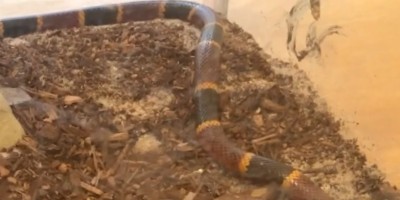 Eastern coral snake:
The eastern coral snake is medium-sized and slender. The snake has a short blunt head that is just slightly wider than the neck. The top of the snake's head and snout are black, and the back of the head has a wide yellow band. The body pattern consists of alternating, complete, transverse rings of red, yellow, and black, with touches of red, yellow and black, that go around the snake's underside. They are 20-30 inches long. The eastern coral snake lives in sandy, woody, and marshy areas on the Southeastern part of the United States. The eastern coral snake feeds on lizards, smaller snakes, frogs, and even carries out cannibalism.
Eastern coral snake:
The eastern coral snake is medium-sized and slender. The snake has a short blunt head that is just slightly wider than the neck. The top of the snake's head and snout are black, and the back of the head has a wide yellow band. The body pattern consists of alternating, complete, transverse rings of red, yellow, and black, with touches of red, yellow and black, that go around the snake's underside. They are 20-30 inches long. The eastern coral snake lives in sandy, woody, and marshy areas on the Southeastern part of the United States. The eastern coral snake feeds on lizards, smaller snakes, frogs, and even carries out cannibalism.
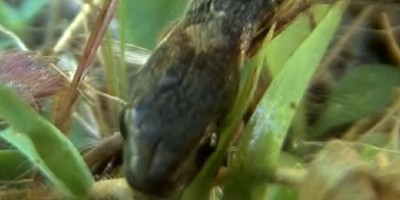 Northern red-bellied snake:
The northern red-bellied snake is small, with a blunt head and a length of 16 inches. The snakes have varying colors, their backs could be brown, black, gray, and the head could be an entirely different color. Most times, the color of the belly is totally different from the rest of the snake. There are three spots on the neck that seem to be a collar. It can be found hiding under piles of leaves and wood. It can be found in hardwood forests and around the edges of wetlands. They like shaded, moist places. The northern red-bellied snake feeds on slugs and earthworms.
Northern red-bellied snake:
The northern red-bellied snake is small, with a blunt head and a length of 16 inches. The snakes have varying colors, their backs could be brown, black, gray, and the head could be an entirely different color. Most times, the color of the belly is totally different from the rest of the snake. There are three spots on the neck that seem to be a collar. It can be found hiding under piles of leaves and wood. It can be found in hardwood forests and around the edges of wetlands. They like shaded, moist places. The northern red-bellied snake feeds on slugs and earthworms.
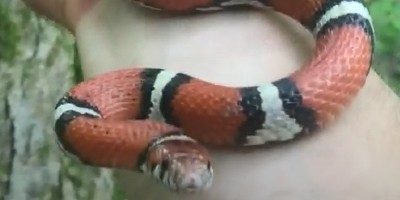 Red milk snake:
The red milk snake is a medium-sized snake, with a length close to 40 inches. The snake's dorsal surface has black-bordered red saddles, with smaller botches on the side, but of the same color. The spacing between saddles is gray, white, yellowish, or cream in color. The top of the snake's head has markings of red, with black rims. It has a white belly, with big rectangular marks, irregularly arranged, or in a checkered design. They occur in dry open woodlands and edges of woodlands. They are also found under rocks. They feed on mice, lizards, birds, bird eggs, rats, voles, snake eggs, and other snakes.
Red milk snake:
The red milk snake is a medium-sized snake, with a length close to 40 inches. The snake's dorsal surface has black-bordered red saddles, with smaller botches on the side, but of the same color. The spacing between saddles is gray, white, yellowish, or cream in color. The top of the snake's head has markings of red, with black rims. It has a white belly, with big rectangular marks, irregularly arranged, or in a checkered design. They occur in dry open woodlands and edges of woodlands. They are also found under rocks. They feed on mice, lizards, birds, bird eggs, rats, voles, snake eggs, and other snakes.
Venomous Snake Species in Mobile
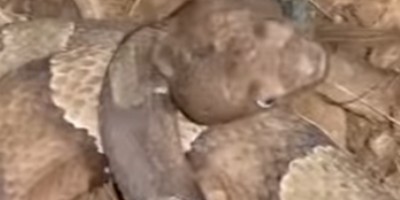 Copperhead:
The copperhead has a facial pit, triangular head, and elliptical pupils. It has a reddish-brown, pinkish, or orange-brown color with perpendicular stripes that are dark brown to reddish in color. The top of the snake's head is yellowish to copper-red, and the sides are paler in comparison. In young snakes, the end of their tails is yellow, while the end of an adult's tail is brown or black to greenish in color. It has a length of two to slightly over four feet. The copperhead is found statewide. Their habitats range from terrestrial to semiaquatic, including forested hillsides, wetlands, and rocks. They are found in piles of sawdust, construction sites, suburban areas, rotting wood, and abandoned places. Adults mostly feed on mice, but they also feed on lizards, small snakes, frogs, small birds, and insects.
Copperhead:
The copperhead has a facial pit, triangular head, and elliptical pupils. It has a reddish-brown, pinkish, or orange-brown color with perpendicular stripes that are dark brown to reddish in color. The top of the snake's head is yellowish to copper-red, and the sides are paler in comparison. In young snakes, the end of their tails is yellow, while the end of an adult's tail is brown or black to greenish in color. It has a length of two to slightly over four feet. The copperhead is found statewide. Their habitats range from terrestrial to semiaquatic, including forested hillsides, wetlands, and rocks. They are found in piles of sawdust, construction sites, suburban areas, rotting wood, and abandoned places. Adults mostly feed on mice, but they also feed on lizards, small snakes, frogs, small birds, and insects.
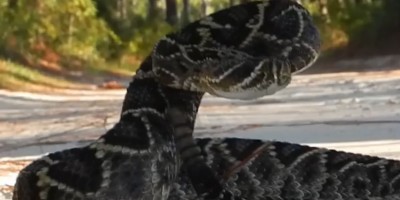 Eastern diamondback rattlesnake:
The eastern diamondback rattlesnake has an olive green to dark brown body. The snake has darker diamond-shaped blotches that are rimmed with cream or yellow and a lighter center on the body. Diagonal white stripes run on the sides of the snake's large triangular head that has facial pits and elliptical pupils. Its length ranges from 3½ to a maximum of 8 feet. They occur in the southern third of the state. They prefer living in coastal forests, barrier islands, pines, wiregrass flats, scrublands, and moist areas. They can also be found in abandoned buildings and farms. Their primary food is small mammals, but they also feed on small birds. They feed on rabbits, squirrels, rats, and mice.
Eastern diamondback rattlesnake:
The eastern diamondback rattlesnake has an olive green to dark brown body. The snake has darker diamond-shaped blotches that are rimmed with cream or yellow and a lighter center on the body. Diagonal white stripes run on the sides of the snake's large triangular head that has facial pits and elliptical pupils. Its length ranges from 3½ to a maximum of 8 feet. They occur in the southern third of the state. They prefer living in coastal forests, barrier islands, pines, wiregrass flats, scrublands, and moist areas. They can also be found in abandoned buildings and farms. Their primary food is small mammals, but they also feed on small birds. They feed on rabbits, squirrels, rats, and mice.
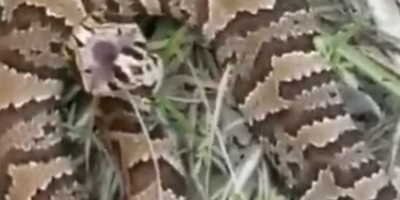 Eastern diamondback rattlesnake:
This snake has an olive or dark brown color with wide dark crossbands. They have a black stripe behind their eye, and the end of their tails are black. The head of the snake is triangular and heavy and possesses facial pits and elliptical pupils. They can be measured between 30 to 45 inches. The maximum length is 6 feet. They are found statewide, especially close to water bodies like creeks, marshes, streams, lakes, etc. The cottonmouth snake's diet includes mammals, birds, amphibians, fishes, and there are records of cannibalism.
Eastern diamondback rattlesnake:
This snake has an olive or dark brown color with wide dark crossbands. They have a black stripe behind their eye, and the end of their tails are black. The head of the snake is triangular and heavy and possesses facial pits and elliptical pupils. They can be measured between 30 to 45 inches. The maximum length is 6 feet. They are found statewide, especially close to water bodies like creeks, marshes, streams, lakes, etc. The cottonmouth snake's diet includes mammals, birds, amphibians, fishes, and there are records of cannibalism.
If you're unsure, you can email me a photo of the snake at info@mobilesnakes.com and I will email you back with the snake's species. If you found a snake skin, read my Found a Skin? page, and you can email me a photo of the skin, and I'll identify the snake for you. If you need professional Mobile snake removal help, click my Get Help page, or see the below website sponsor I found, who provides that service.
Remember, the term is not poisonous snakes of Mobile, it's venomous snakes of Mobile. Poison is generally something you eat, and venom is injected into you. That said, dangerous snakes are very rare in Mobile. The few venomous snakes of Mobile County are rarely seen. But they are commonly misidentified, so learn about all the snake species of Mobile in order to correctly identify them. These snakes are usually also found in the surrounding towns of Tillmans Corner, Dauphin Island, Saraland, Semmes, Theodore, Prichard, Grand Bay, Chickasaw, Citronelle, Satsuma, Bayou La Batre, Creola, Mount Vernon, Chunchula, Axis, Bucks, Movico, and the surrounding areas.
Read our article about:
Why Do Snakes Dry Bite?
mobilesnakes.com domain and hosting costs made possible by the generous support of this sponsor:
